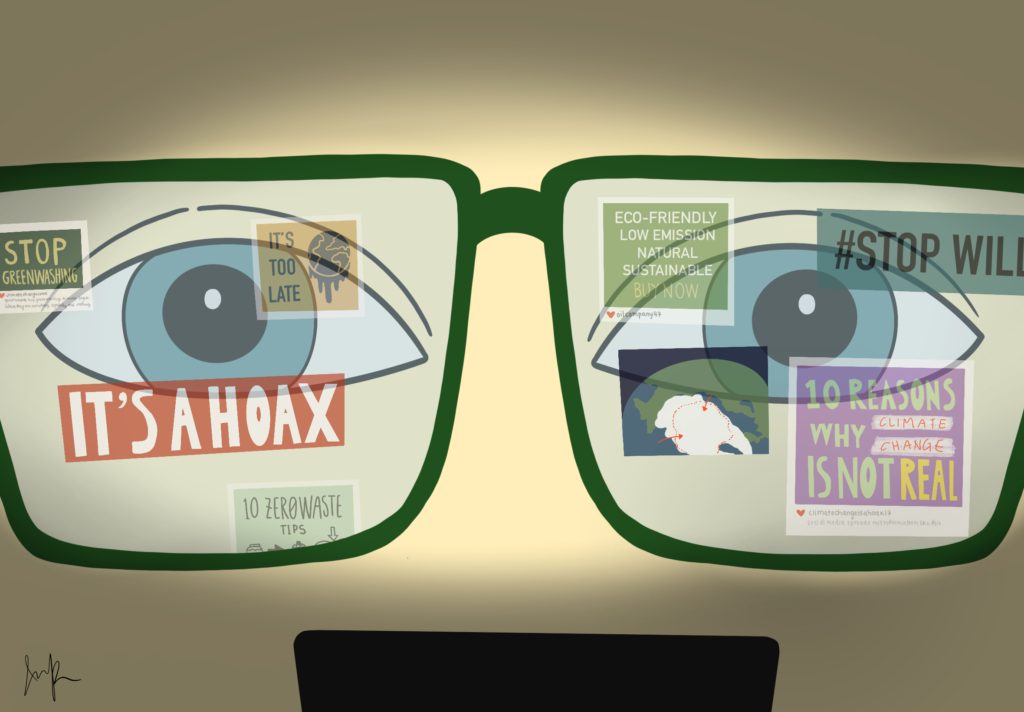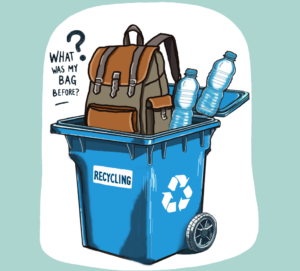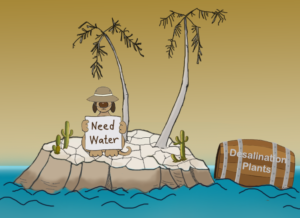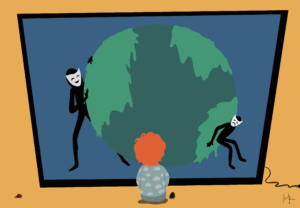
Social Media has been regarded as the negative rabbit hole teens fall into, but it could be the answer to climate change awareness (Lazarovic, Sarah).
Even though platforms such as YouTube, Facebook, and TikTok are filled with false information, these algorithms are perfect for spreading the word quickly. Many teens report learning about climate change on these platforms, which has both benefits and drawbacks (Prothero, Arianna).
Spreading climate change news on social media invites misinformation, ultimately pushing back the fight for climate safety. The increased discussion of climate change on these platforms actually encourages skepticism of climate change, regardless of the scientific proof of this phenomenon (Turrentine, Jeff).
According to NRDC, many fossil fuel companies have even gone out of their way to feed misinformation on social media to undermine climate change activism (Turrentine, Jeff). This misinformation only reinforces the negative impact of social media. These large corporations are able to hide behind a screen and feed whatever they wish to passive viewers.
In addition, the increase in social and cognitive bias adds to the negative influence of social media. Even though climate change is supported by scientific research, many viewers do not take the time to check the information they post. Cognitive biases are mental shortcuts we take, leading us to take the “easy way out.” Social biases are also detrimental, which are defined as blindly believing something a family member or a close friend sends (Turrentine, Jeff).
On the other hand, social media does have positive effects that could ultimately help the fight against climate change. According to EducationWeek, 32% of teens have learned “some” about climate change through social media. Even though there could be misinformation on these platforms, they could be used as educational tools. (Prothero, Arianna).
According to Good News, if media influencers follow multiple rules, social media can be used as a positive learning environment. These rules include being transparent about all sides of a linked passage, using credible sources, and using facts rather than opinions. Even though social media may be a rabbit hole of information, if used properly, it could be the key to raising awareness for climate change. (Lazarovic, Sarah).
Social media algorithms are able to spread information to a wide range of viewers in a small amount of time. Many platforms help businesses and advocates grow a large and loyal follower base. If climate change advocates were to use social media in proper ways, without bias and only facts, the information would spread to millions in a matter of minutes. (Adobe Communications)
Social media has both negatives and positives, especially seen through climate change advocacy, but if used properly, it may be the answer to calling teens to action.
Works Cited
“How to Use Social Media to Influence Climate Change | Goodside.” Www.joingoodside.com, www.joingoodside.com/blog/talk-climate-change-social-media. Accessed 15 Mar. 2023.
Prothero, Arianna. “Most Teens Learn about Climate Change from Social Media. Why Schools Should Care.” Education Week, 30 Jan. 2023, www.edweek.org/technology/most-teens-learn-about-climate-change-from-social-media-why-schools-should-care/2023/01.
Turrentine, Jeff. “Climate Misinformation on Social Media Is Undermining Climate Action.” NRDC, 19 Apr. 2022, www.nrdc.org/stories/climate-misinformation-social-media-undermining-climate-action.
15 Benefits of Social Media Marketing | Adobe.
The views and opinions expressed are those of the authors and do not necessarily reflect nor represent the Earth Chronicles and its editorial board.











